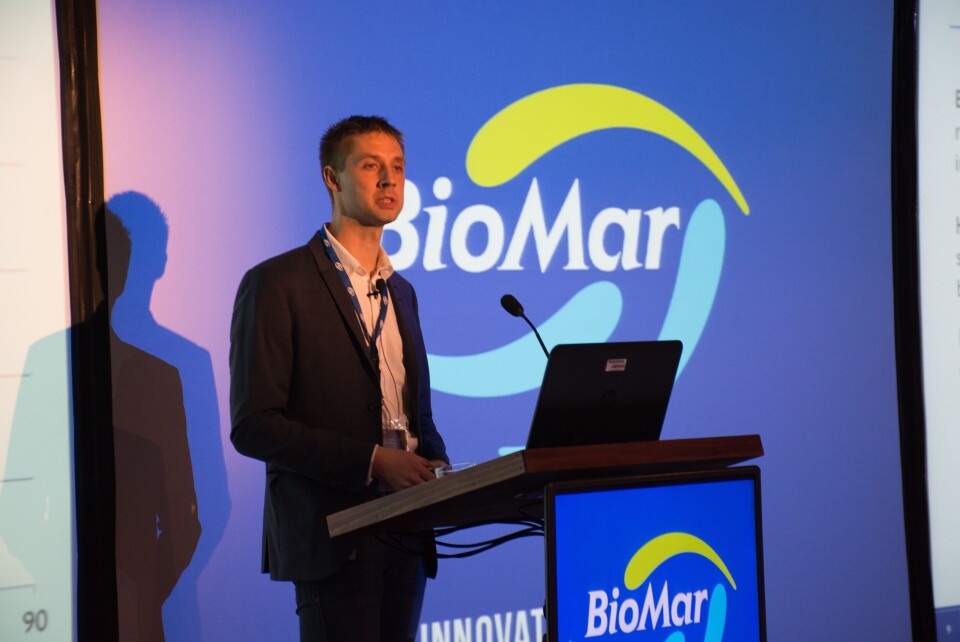
A step ahead
Biomar believes that their long experience of providing specialised feeds for trout in RAS systems has enabled them to successfully develop specific salmon recirc diets ahead of their rivals.
Mikkel Detz Jensen, head of Biofarm, Biomar’s Danish company, said in an interview with kyst.no that long before there was a need for separate feed for salmon in RAS facilities, the company developed a feed for trout in these types of facilities.
“This feed was intended for the Danish market. But in view of the positive feedback from the market, and the increasing interest in the production of smolts in recirculation systems we started early with this type of feed for salmon globally,” he said.
This work is carried out in cooperation between Biomar’s research department and the department Biofarm. Kim Ekmann, who is Global Group Manager for raw materials in the research department, formulated the new Orbit range for salmon.
“Kim ran a wide range of internal R & D trials, which were tested by our customers before the finished products were launched,” Detz Jensen says.
“By reducing the burden of biofilters it has been possible to increase production at existing plants by virtue of optimized DP: DE [digestible protein vs digestible energy] ratio and the use of materials with higher digestibility. We have also succeeded in creating faeces which are easy to collect through mechanical filtration and/or sedimentation,” he explains to kyst.no.
The company says their customers in Denmark have helped the process by taking part in trials and and providing valuable feedback during the process.
“Without this help we would not have come so far, as we are today,” says Detz Jensen.
How does this feed work in closed containment vs. feed for hatchery or in open systems?
“By virtue of lower crude protein content but with the same content of digestible protein, we ensure a constant high growth. When the digestibility of protein is higher and the amino acid is better tuned fish requirements, reduced load of biofilters - and thus helps to ensure better water quality and more capacity,” he informs.
He adds that the top priority is to reduce the organic load, by removing faeces and uneaten food as soon as possible.
“This requires that the faeces are of a physical nature which makes it possible to remove them before they dissolve and release nutrients into the water. Secondly one can ensure that the organic load is as small as possible. This can be achieved by optimizing the feed for fish's needs at a given size of the fish,” said Detz Jensen.
Using raw materials with a very high digestibility reduces the amount of protein used and will increase a facility's maximum capacity. A change of feed from standard to a specialised recirculation diet thereby increases the capacity of a plant significantly, according to the Detz Jensen.
Detz Jensen's task in Biofarm, together with colleagues has been to optimize customer benefit from using the company's products.
“We focus on RAS systems and are happy to discuss the daily operation with our customers. Due to his background in feed composition, it has been obvious for me to work closely with Kim Ekmann and our customers around the development of Orbit. It has been a long and exciting journey from the initial experiments with trout in Denmark until now, when the feed has been introduced to both Norway and Chile,” he concluded.




















































